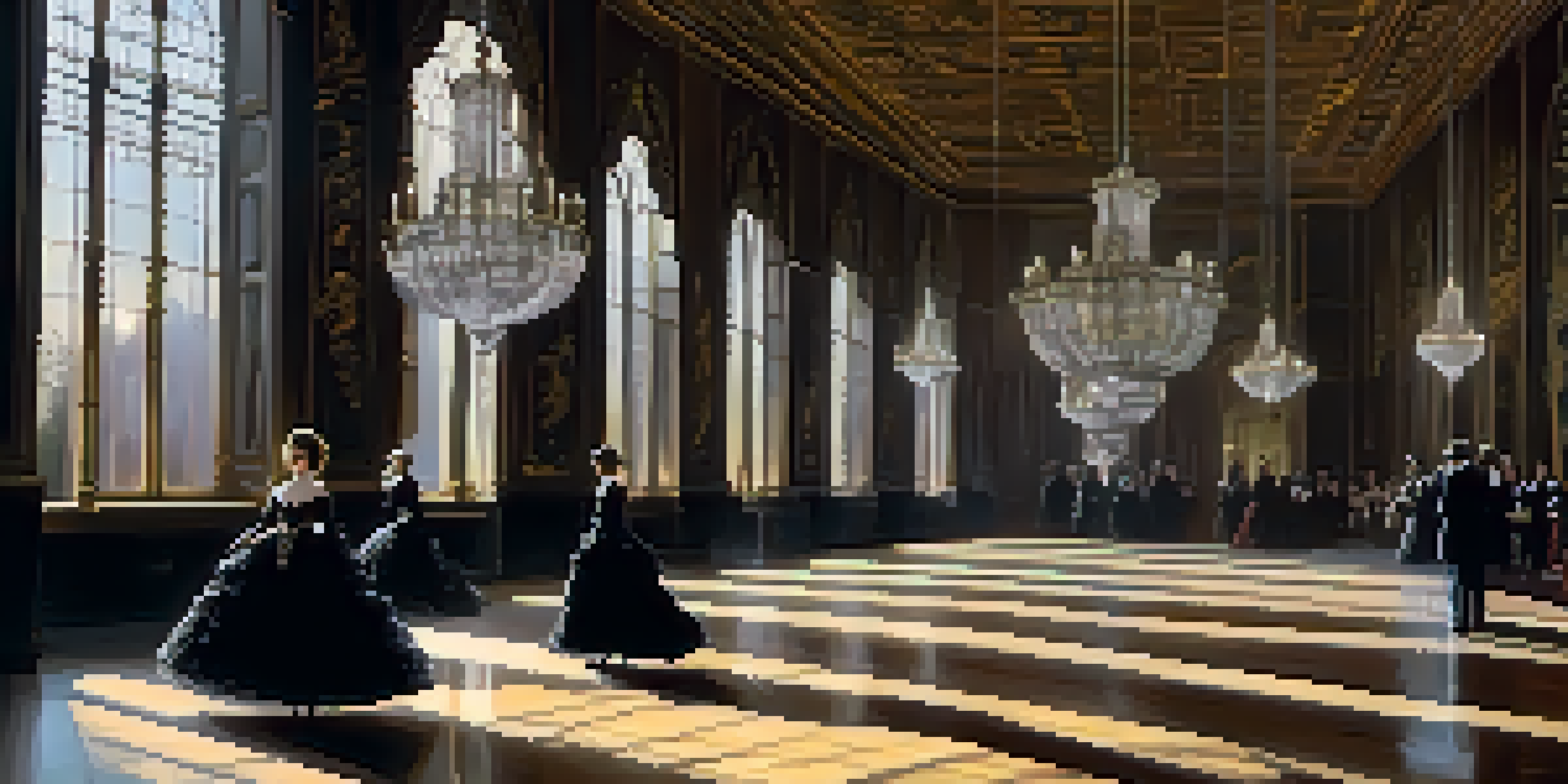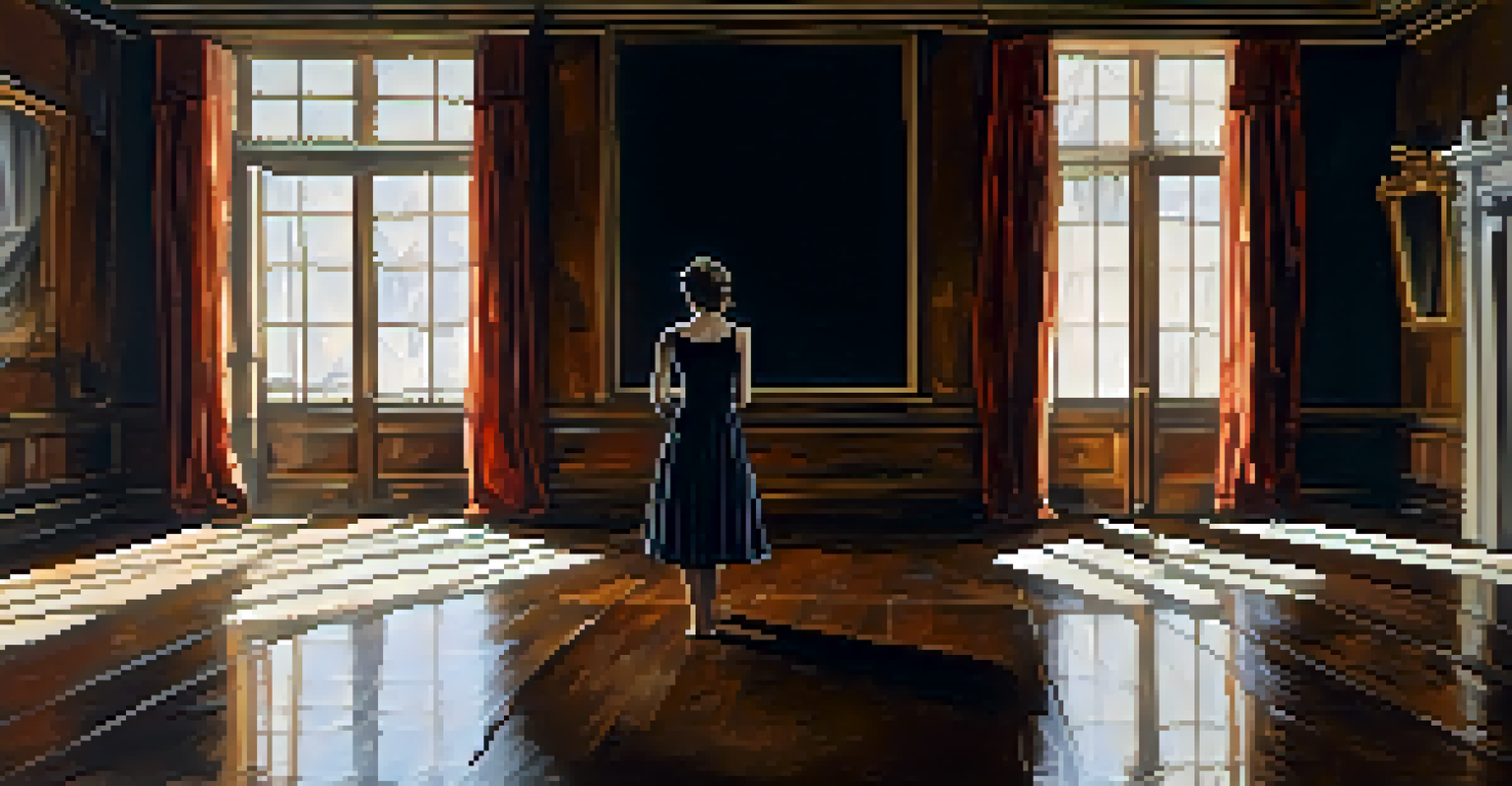Gothic Literature: Dance as a Symbol of the Supernatural

Introduction to Gothic Literature and Dance
Gothic literature, known for its dark and mysterious themes, often weaves supernatural elements into its narratives. One striking motif that frequently appears is dance. Dance, in this context, symbolizes not just movement but a deeper connection to the unknown and the ethereal.
All human beings should try to learn before they die what they are running from, and to, and why.
In many Gothic tales, characters find themselves drawn into dances that blur the lines between reality and the supernatural. This motif raises questions about the nature of existence and the influence of otherworldly forces. By examining dance, we can uncover the complexities of these narratives and their emotional depth.
The dance serves as a powerful metaphor for transformation and transcendence, allowing characters to confront their fears and desires. As we delve deeper into this theme, we will explore specific examples and their implications within the Gothic tradition.
The Dance of Death: A Common Theme
One of the most prevalent symbols of dance in Gothic literature is the 'dance of death,' or 'danse macabre.' This theme illustrates the inevitability of death and the universal nature of mortality. Characters may participate in this dance, engaging with their fate in a way that is both haunting and enlightening.

In works like Edgar Allan Poe's 'The Masque of the Red Death,' the dance signifies a confrontation with death that cannot be avoided. The characters, despite their attempts to evade their demise, find themselves drawn into a macabre celebration of life and death. This duality serves to heighten the tension and highlight the ephemeral quality of human existence.
Dance as a Symbol of Mortality
The 'dance of death' motif in Gothic literature emphasizes the inevitability of mortality and invites readers to reflect on their own existence.
Through the dance of death, Gothic literature invites readers to reflect on their own mortality. It emphasizes the idea that life is fleeting, and the dance itself becomes a poignant reminder of the inescapable fate that awaits us all.
Romantic and Chaotic Dances in Gothic Settings
In contrast to the somber dance of death, Gothic literature also features romantic and chaotic dances that embody passion and turmoil. These dances often serve as a backdrop for crucial plot developments, where characters experience intense emotions that propel the story forward. The dance, in this sense, becomes a catalyst for transformation.
Death is nature's way of telling you to slow down.
For instance, in the works of Mary Shelley, characters often find themselves in turbulent emotional states, mirrored by chaotic dance scenes that reflect their internal struggles. The frenzy of movement can symbolize both liberation and entrapment, showcasing the characters' desires and fears.
These romantic and chaotic dances highlight the tension between the human experience and supernatural forces, illustrating how dance can evoke a range of emotions. The juxtaposition of the romantic and the chaotic adds depth to the characters, enabling readers to connect with their journeys on a more profound level.
Supernatural Beings and Their Dances
Supernatural beings, such as ghosts and spirits, frequently engage in dances that captivate the living. These ethereal dances serve as a bridge between realms, inviting characters to explore the mysteries of the supernatural. The allure of the dance often entices characters, drawing them into a world beyond their understanding.
In literature, such as in the tales of the Brothers Grimm, the dance of the supernatural often comes with an air of enchantment and danger. Characters may find themselves entranced, caught between the desire to join the dance and the fear of losing themselves to the unknown. This dynamic creates a tension that heightens the narrative stakes.
Transformation Through Dance
Dance serves as a powerful metaphor for character transformation, allowing individuals to confront their fears and desires in Gothic narratives.
The supernatural dance symbolizes the seductive nature of the otherworldly, illustrating how it can both inspire and consume. This motif reinforces the idea that the supernatural is not merely a backdrop but an active participant in the characters' lives, shaping their destinies.
The Role of Dance in Character Development
Dance in Gothic literature often plays a crucial role in character development, revealing their inner conflicts and desires. Through participation in various dances, characters confront their fears and aspirations, leading to significant transformations. The act of dancing becomes a vehicle for self-discovery and revelation.
For example, in Charlotte Perkins Gilman's 'The Yellow Wallpaper,' the protagonist's descent into madness is mirrored by her erratic movements and imagined dances. As she grapples with her confinement, the dance symbolizes her struggle for autonomy and identity. It becomes a powerful expression of her mental state, reflecting her journey toward liberation.
Such character-driven dance sequences allow readers to connect deeply with the characters’ emotional landscapes. By illustrating their struggles through movement, Gothic literature provides a nuanced exploration of the human experience and the complexities of the psyche.
Dance as a Reflection of Societal Norms
Beyond individual character development, dance in Gothic literature often reflects societal norms and expectations. The way characters engage in dance can signify their adherence to or rebellion against societal standards. This tension between conformity and individuality is a recurring theme in many Gothic narratives.
For instance, in many Gothic novels, the formal ball serves as a microcosm of society, where characters navigate the expectations placed upon them. The dance becomes a performance, revealing the characters' desires to fit in or break free from societal constraints. This duality creates a rich layer of meaning within the narrative.
Dance Reflects Societal Norms
Engagement in dance within Gothic literature reveals characters' struggles between conformity and individuality, highlighting broader societal expectations.
By examining how dance interacts with societal norms, we gain insight into the characters' motivations and the broader cultural context. This interplay between dance and society underscores the significance of Gothic literature in exploring the complexities of human behavior and social dynamics.
Conclusion: The Enduring Symbolism of Dance
In conclusion, dance serves as a powerful symbol in Gothic literature, representing the supernatural, personal transformation, and societal norms. Through its various manifestations—from the haunting dance of death to chaotic romantic dances—dance encapsulates the essence of Gothic themes. It invites readers to engage with the narratives on multiple levels.
As we have explored, dance is not merely an ornamental element but an integral part of the storytelling process. It enriches the characters' journeys, providing insight into their struggles and triumphs. The symbolism of dance continues to resonate, allowing contemporary readers to connect with these timeless themes.

Ultimately, the enduring nature of dance in Gothic literature reflects our own fascination with the supernatural and the complexities of human emotion. As we continue to explore these narratives, the dance remains a captivating symbol of the mysterious and the profound.